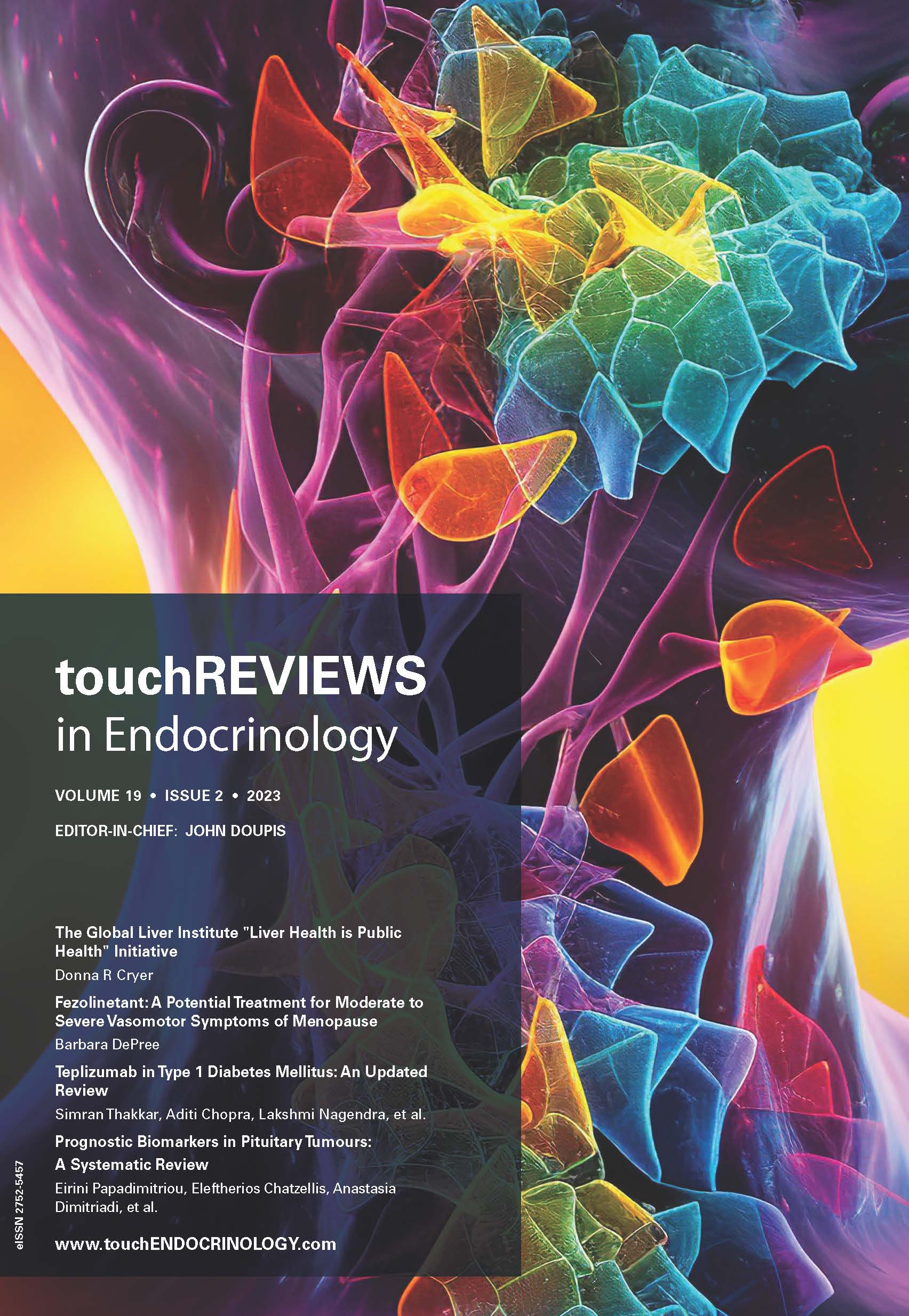EUROPEAN ENDOCRINOLOGY – VOLUME 6 ISSUE 2 – WINTER 2010
Foreword
There is a battle raging globally in which countries around the world are suffering many casualties. It is being fought right here in Europe. In Europe this year, more than 630,000 deaths will be attributable to diabetes – over 182,000 in the Russian Federation alone.1 National prevalence rates for diabetes show a wide variation from […]
Current Issues
The Indian economist Amartya Sen wrote in 2001 that, ‘gender inequality has many faces’.1 Despite rapid progress in many parts of the world, the many faces of inequality between women and men, girls and boys remain widespread and have critical implications for the spreadand management of diabetes.
Diabetes Pathophysiology
Vitamin D is obtained from sun exposure, diet (oily fish or fortified dairy products) and dietary supplements. Serum concentration of 25-hydroxyvitamin D [25(OH)D] is a valid marker of vitamin D status.1 Very low levels of 25(OH)D (e.g.
Brain Trauma - DPP-4 Inhibitors
Intestinal Hormones and Glucose Regulation The importance of the intestine in regulating post-prandial glucose levels unfolded over the latter half of the 20th century. Observations in the early 20th century demonstrated that intestinal extracts could alleviate diabetes, but these studies were overlooked.1,2 It was not until the 1960s that the ‘enteroinsular axis’ and the incretin […]
Continuous Glucose Monitoring
More than 15 years have elapsed since the publication of major studies that clearly demonstrated the benefit of aggressive glycaemic control in persons with diabetes.1–3 Currently, frequent self-monitoring of blood glucose (SMBG) is required to achieve tight glycaemic control.4 However, SMBG does not provide information about the direction, magnitude, duration, frequency and causes of fluctuations […]
Type 1 diabetes is one of the most common endocrine problems in childhood and adolescence and its incidence is increasing.1,2 Of the estimated 480,000 children with type 1 diabetes worldwide, nearly a quarter come from the European region, with a steeper increase in incidence in some of the Central and Eastern European countries.3 While type […]
Pituitary Disorders
Lanreotide Autogel Therapy in Patients with Acromegaly –Current Role and Perspectives for the Future
Acromegaly is caused by excessive secretion of growth hormone (GH), almost always from a benign pituitary adenoma. When not treated, it is a disfiguring and debilitating disease causing severe co-morbidity and premature death.1 The available treatment modalities for acromegaly are selective trans-sphenoidal adenomectomy, radiotherapy, medical treatment and a combination of these. The effects of surgery […]
Surgery is first-line therapy for functioning pituitary adenomas (FPAs) and non-functioning pituitary macroadenomas (NFPAs) apart from prolactinomas. About 30% of NFPAs recur within five to 10 years1 and up to 60% of FPAs are still biochemically active after surgery.2–4 Somatostatin analogues and/or the growth hormone (GH)-receptor antagonist pegvisomant are often needed to achieve disease control […]
Growth hormone (GH) therapy was introduced in the 1950s, but the initial GH preparations extracted from human cadaver pituitaries were reserved the treatment of GH deficiency (GHD) children.1 Since 1985, only recombinant DNA-derived biosynthetic human GH free from, for example, Creutzfeldt-Jakob prions has been used.2
Thyroid Disorders
Thyroid Hormone and its Receptors The thyroid gland secretes two forms of thyroid hormone: T4 (3,3’,5,5’-tetraiodo-L-thyronine, thyroxine) and T3 (3,3’,5-triiodo-Lthyronine). While T4 has little biological activity and is considered a prohormone, T3 is the receptor-active form and exerts most of the thyroid hormone effects.1
Parathyroid Disorders
Classic Primary Hyperparathyroidism
Neuroendocrine Tumours
Digestive Neuroendocrine Tumours Digestive neuroendocrine tumours (carcinoids) derive from serotoninproducing enterochromaffin cells. The digestive neuroendocrine tumours are classified as: foregut – originating from the oesophagus to the pancreas; midgut – ‘classic’; presenting with the carcinoid syndrome that includes flushing, diarrhoea and hypotension. They originate from the jejunum to the right colon and gonads; or hindgut […]

Trending Topic
Thyroid nodules are common worldwide, and their prevalence is increasing. Most nodules are asymptomatic and detected incidentally on cross-sectional imaging or physical examination. In rare cases (10–15%), nodules are malignant and require diagnostic evaluation. Even malignant nodules frequently show non-aggressive behaviour.1 The increase in the incidence of thyroid cancer is unfairly distributed globally, and the […]
Journal Archive
touchREVIEWS in Endocrinology (previously European Endocrinology) is a peer-reviewed, free-to-access, bi-annual journal comprising review articles, case reports, editorials, special reports and original research. It features balanced and comprehensive articles written by leading authorities, addressing the most important and salient developments in the field of endocrinology.
Latest articles videos and clinical updates - straight to your inbox
Log into your Touch Account
Earn and track your CME credits on the go, save articles for later, and follow the latest congress coverage.
Register now for FREE Access
Register for free to hear about the latest expert-led education, peer-reviewed articles, conference highlights, and innovative CME activities.
Sign up with an Email
Or use a Social Account.
This Functionality is for
Members Only
Explore the latest in medical education and stay current in your field. Create a free account to track your learning.






